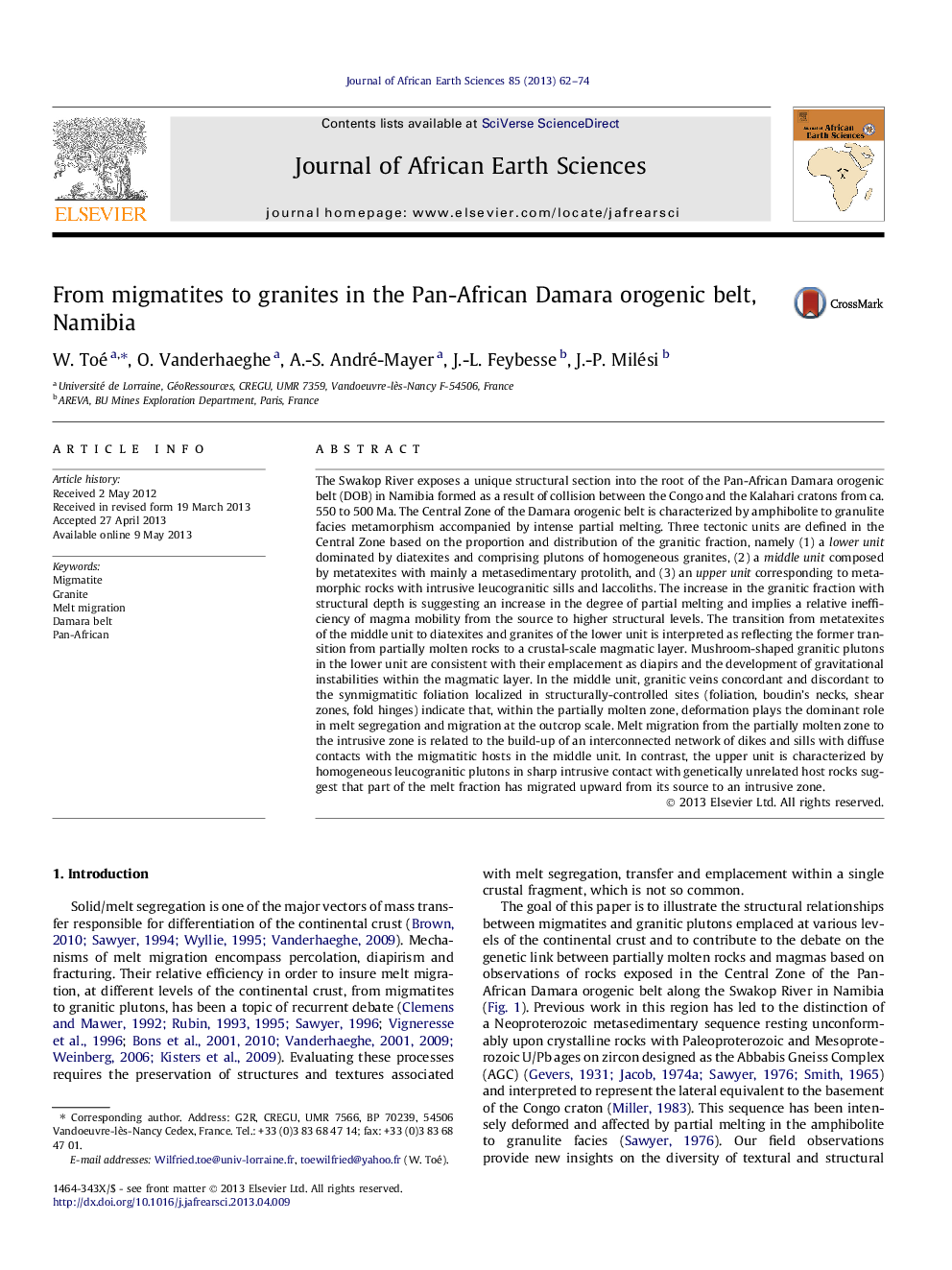| کد مقاله | کد نشریه | سال انتشار | مقاله انگلیسی | نسخه تمام متن |
|---|---|---|---|---|
| 4728946 | 1640221 | 2013 | 13 صفحه PDF | دانلود رایگان |

• Original field observations in the Swakop River in the Damara orogenic belt (DOB).
• Proportion and structural distribution of granitic leucosomes, veins and plutons.
• Identification of three structural units based on migmatites description.
• Melt segregation and migration mechanisms at different structural levels.
• Flow of partially molten rocks and magma related to deformation at the DOB scale.
The Swakop River exposes a unique structural section into the root of the Pan-African Damara orogenic belt (DOB) in Namibia formed as a result of collision between the Congo and the Kalahari cratons from ca. 550 to 500 Ma. The Central Zone of the Damara orogenic belt is characterized by amphibolite to granulite facies metamorphism accompanied by intense partial melting. Three tectonic units are defined in the Central Zone based on the proportion and distribution of the granitic fraction, namely (1) a lower unit dominated by diatexites and comprising plutons of homogeneous granites, (2) a middle unit composed by metatexites with mainly a metasedimentary protolith, and (3) an upper unit corresponding to metamorphic rocks with intrusive leucogranitic sills and laccoliths. The increase in the granitic fraction with structural depth is suggesting an increase in the degree of partial melting and implies a relative inefficiency of magma mobility from the source to higher structural levels. The transition from metatexites of the middle unit to diatexites and granites of the lower unit is interpreted as reflecting the former transition from partially molten rocks to a crustal-scale magmatic layer. Mushroom-shaped granitic plutons in the lower unit are consistent with their emplacement as diapirs and the development of gravitational instabilities within the magmatic layer. In the middle unit, granitic veins concordant and discordant to the synmigmatitic foliation localized in structurally-controlled sites (foliation, boudin’s necks, shear zones, fold hinges) indicate that, within the partially molten zone, deformation plays the dominant role in melt segregation and migration at the outcrop scale. Melt migration from the partially molten zone to the intrusive zone is related to the build-up of an interconnected network of dikes and sills with diffuse contacts with the migmatitic hosts in the middle unit. In contrast, the upper unit is characterized by homogeneous leucogranitic plutons in sharp intrusive contact with genetically unrelated host rocks suggest that part of the melt fraction has migrated upward from its source to an intrusive zone.
Journal: Journal of African Earth Sciences - Volume 85, September 2013, Pages 62–74